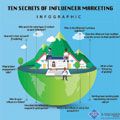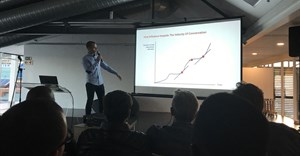Trending
Elections 2024
Jobs
- Creative/Conceptual Copywriter Cape Town
- Sales Consultant Nelspruit
- Copywriter and Content Producer Cape Town
- Marketing Account Executive Johannesburg
- Marketing Manager George
- Senior Digital Marketing Communications Specialist Cape Town
- Marketing Channel Manager George
- Head of Marketing Johannesburg
- Corporate Fundraising Officer Cape Town
- Account Executive Cape Town
Will the real influencers please stand up?

According to a study by MediKix, global spending on Instagram influencer marketing alone is projected to reach as much as $10bn by 2020. Celebrities and socialites, eager to get in on the action, have taken to social media to promote various high-end products and brands on their various social media accounts, even demanding free stuff and payment for blog write-ups. Part of these deals is that the personalities post videos and images promoting a product or service in exchange for brands gaining access to their millions of followers, who would be more likely to buy a product used by their favourite personality.
Influencer marketing
As brands seek out new ways of forming more meaningful connections with their global communities, influencer marketing is becoming an increasingly important part of the marketing mix. But this comes at a cost, with top influencers in the U.S demanding as much as R3.5m per post, while a famous name in South Africa can make R250,000 – still big money by any standard.
Too often, however, a personality who is otherwise very popular and exciting, will have little knowledge of the brand but will publish posts purely for the money. The danger with this is that the promotion feels insincere and is diluted by the other brands they promote, often in the same product category.
Another worrying practice is that of buying followers, particularly on Instagram. It is still entirely legal, and for less than the price of coffee a person can buy 500 Instagram followers. Although there are multiple tools available such as FollowerCheck, which can help determine fake followers, these still don’t answer the question of who the real influencers are.
Flawed thinking leads brands to see influencer marketing as an effort to make paid-for connections and content look like they have been earned, but, due to the algorithms on social networks, most followers don’t even get to see the content from paid-for online influencers. The result is an “unnatural” fit which proves expensive, inauthentic and, in the long run, only marginally better than traditional advertising.
Organic influencers
True influencers should be defined based on three criteria: reach, resonance and relevance. Most companies measure reach only, but resonance and relevance are probably more important as these determine an influencer’s ability to drive action among their peers and network. The secret to making influencer marketing work to its best potential is in understanding where to look for influencers. Existing followers who have voluntarily signed themselves up to learn more about the brand and associate themselves with it, go largely unseen. These are the people who want to know what other followers think as well as what special promotions are on offer. They want to know what products are the most popular, which recipes (or usage methods) are the best, and which colours are in season. However, they want to learn these things from people they trust.
Every brand with a strong social media presence has a horde of brand influencers, whose collective reach outweighs that of any individual’s. While some of them might not be as famous as celebrity ‘influencers’, these people represent the heart and soul of the brand. Their passion and genuine interest make them easier to engage with over the long-term, not to mention much more cost efficient.
So, why spend huge budgets trying to force an inauthentic relationship with a celebrity who most likely wasn’t even using the product anyway? Why not tap into the rich pool of influencers already in the online community? Artificial intelligence technology and big data analytics tools are emerging that can cut through the celebrity fluff and fake followers to provide precise information about thousands of real fans and followers across a spectrum of social media platforms.
While ambitious socialites and bloggers will only come onto the scene in greater numbers, brands can use their budgets more wisely by identifying, engaging and nurturing the real influencers in their networks every time.






















